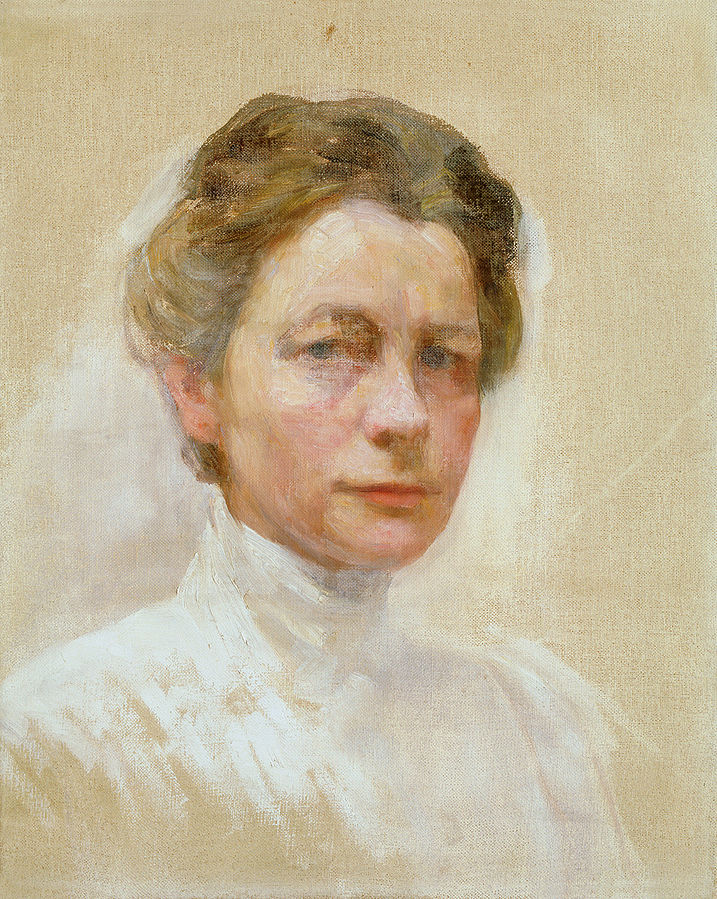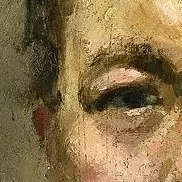Judging by her social origin, way of living, ideals and work, she was an urban artist. She is one of Slovene realists, who created their most important paintings in the 1880s. Kobilca’s greatest tribute to Slovenian art was made during the time she lived abroad. Her greatest impact was on figural painting, especially portraits and paintings of typical people’s lives in rustic or urban places. Since the time she had spent in Berlin, her most important genre became floral still life. Her early work reflects characteristics of München studio-work. Her focus was on value, chiaroscuro and draftsmanship; only her pastels were light and rosy. From 1889 onwards her painting became lighter with blue nuances, typical for Parisian art at the time.
In the late 1880s many artists were influenced by the Impressionist movement that began in France with Monet, Morisot, Renoir and others. Ivana Kobilca, however stayed true to her academic artistic roots; with strong focus on study of value, draftsmanship and realism in oil painting.
Kobilca’s best known paintings are Kofetarica (Coffee Drinker), 1888; Citrarica (Zitherist), Likarice (Women Ironers), 1891; Holandsko dekle (Dutch Girl), Portret sestre Fani (Portrait of Sister Fani), 1889; and Poletje (Summer), 1889
Self portrait

Madonna Souvan


